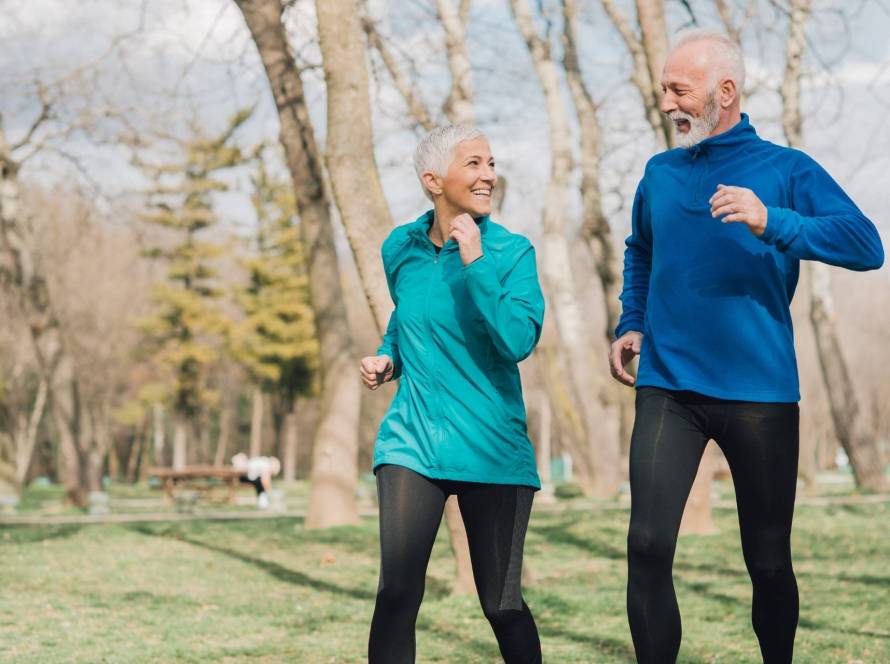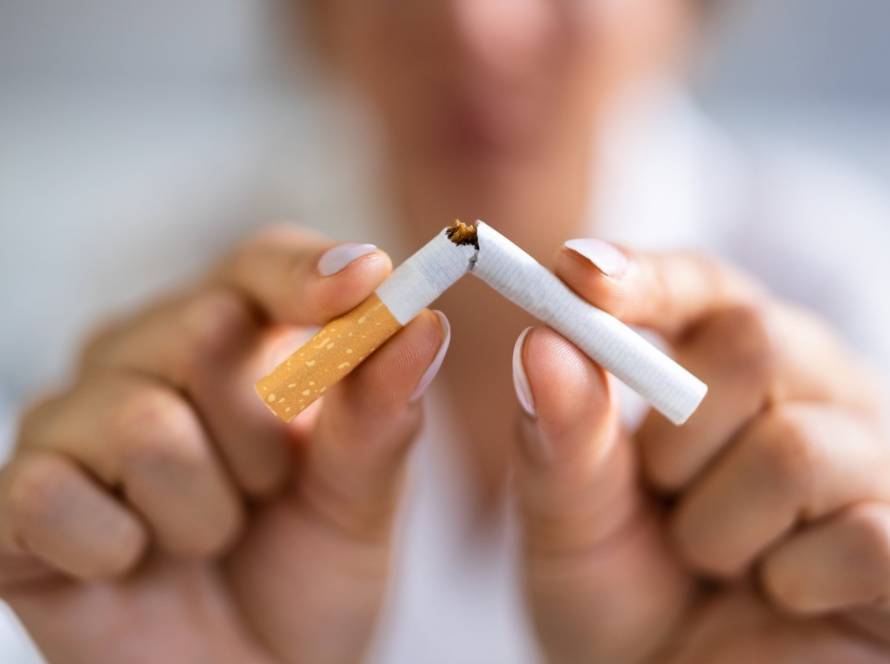Progerin serves as a biological marker of aging. The protein accumulates in our cells and causes DNA damage and cellular dysfunction. Scientists have discovered that progerin significantly impacts skin cells and blood vessels, which leads to age related changes.
This piece outlines how to reduce progeria naturally, such as dietary changes, lifestyle adjustments and key nutrients that could help reduce progerin buildup and promote healthy cellular aging.
Reducing progerin
To reduce progerin naturally, focus on lifestyle habits that minimize cellular stress and support DNA repair. Limiting sun exposure, especially to UVA rays, can prevent skin related progerin accumulation, while an antioxidant rich diet with foods like berries, leafy greens and olive oil helps lower oxidative stress.
Activating autophagy through intermittent fasting, regular exercise and nutrients like spermidine and green tea extract may promote the removal of damaged roteins. Supporting methylation and DNA integrity with b vitamins, magnesium and quality sleep also plays a role. Together, these strategies may help slow progerin buildup and support healthier aging.
Understanding progerin and its role in aging
Progerin is a malformed protein that speeds up how cells break down and age. Scientists who studied this protein learned a lot about how cells age, which might help us find ways to slow down aging.
What is progerin and how is it formed
Progerin is a shortened, harmful version of lamin A, which cells need to keep their nucleus strong and stable. The protein forms because of changes in the lamin A (LMNA) gene. Most of the time, progerin shows up when there’s a tiny change, a C to T transition at nucleotide 1824 in exon 11 of the LMNA gene. This change doesn’t affect the amino acid (G608G), but it turns on a hidden splice site that removes 150 base pairs from the mRNA.
This different splicing creates an altered protein that’s missing 50 amino acids near its C-terminus. The missing piece is vital because the ZMPSTE24 enzyme needs it to turn prelamin A into regular lamin A. Without this step, progerin remains permanently farnesylated, which means it stays stuck to the nuclear membrane with a fatty acid tail.
The altered progerin molecule messes up how the nucleus works and looks. Regular lamin A helps form the nuclear lamina, a network that supports the nucleus, but progerin warps this structure and makes cells work poorly.
The connection between progerin and cellular aging
Progerin makes the nuclear envelope unstable, which creates many problems for cells. As progerin builds up, the nucleus starts to look different, it develops bulges, gets thicker walls, loses some of its structure and its pores cluster together.
These structural changes mess up important cell processes:
- Cells can’t fix DNA damage properly;
- Cell division doesn’t work right because progerin gets in the way during mitosis;
- Gene expression patterns change because chromatin gets reorganized;
- Telomeres stop working correctly, which makes cells age faster.
Progerin basically forces cells into senescence, a state where they’re alive but can’t divide anymore. Research shows cells enter senescence too early and can’t move around properly when progerin is present. The protein also changes how telomeres are organized in 3D and affects their chromatin state.
Everyone’s body makes small amounts of progerin naturally. We produce more as we get older, which seems to play a part in normal aging.
How progerin accumulates in different tissues
Progerin doesn’t build up the same way everywhere in the body. Studies of tissue samples from people with progeria show that progerin mainly collects in blood vessels. These vessels have very high progerin levels, which explains why people with premature aging often have heart problems.
The brain seems to avoid progerin buildup. Scientists think lamin A (and progerin) work differently in brain tissue, which might explain why thinking and memory stay sharp even when other parts of the body age quickly.
Studies show that different tissues break down progerin at very different rates. The protein sticks around for months in heart and blood vessel tissue. The protein lasts much longer in heart, aorta and fat compared to liver and intestine.
These differences in how long progerin stays in tissues match up with how diseases develop. Tissues that take longer to break down progerin show more aging damage. The protein also makes it harder for cells to recycle hundreds of other proteins, which speeds up tissue breakdown even more.
The impact of oxidative stress on progerin levels
Oxidative stress plays a crucial role in progerin buildup and speeds up aging processes. Scientists have found a complex link between free radicals and this toxic protein that points to natural ways we might step in.
How free radicals increase progerin production
The free radical theory of aging, first proposed by Harman in the 1950s, remains one of the most accepted causes of aging. Research shows cells from Hutchinson-Gilford Progeria Syndrome (HGPS) patients have much higher reactive oxygen species (ROS) levels than age matched controls, about 1.6 times higher. These high levels boost progerin production in several ways.
Free radicals can damage the LMNA gene and cause more progerin to be made. Research shows that damage from ROS is a main driver of age related problems and likely causes many issues seen in HGPS patients. This creates a dangerous cycle where progerin and oxidative stress feed off each other.
Research shows that even short contact with hydrogen peroxide (H₂O₂) at levels between 50-400 μM for just 10 minutes can disrupt how proteins are arranged in the nucleus. These changes look just like what happens in cells that have progerin.
Natural antioxidants that curb progerin related damage
Scientists have found several promising natural compounds that reduce progerin related oxidative damage. Sulforaphane (SFN) from broccoli sprouts stands out. Studies show SFN treatment lowers ROS levels in HGPS cells and boosts ATP production. These treated cells also break down proteins better and have less progerin.
Taking magnesium supplements offers another solution. Studies show dietary magnesium helps the NADPH coupled glutathione redox system work better by improving both GSH/GSSG and NADPH/NADP ratios. This cuts down ROS production and helps progeria mice live longer. Magnesium also boosts how well mitochondrial proton pumps (complexes I, III and IV) work, which helps cells make the ATP they need to survive.
Other helpful compounds include:
- Morin, a natural antioxidant that might help both HGPS patients and normally aging people live longer;
- Resveratrol, which protects blood vessel cells by activating NRF2;
- Foods rich in antioxidants like berries, leafy greens and turmeric.
Using targeted antioxidant strategies to reduce oxidative stress offers a natural way to fight progerin buildup. These approaches tackle a basic mechanism of fast aging and show promise for anyone looking to lower their progerin levels.
Vitamin D3: a powerful progerin blocker
New research shows vitamin D3 works as a powerful natural way to reduce progerin levels. This fat soluble vitamin does more than support bone health, it can fight against how cells age.
Studies show that vitamin D treatment reduces progerin production by a lot in cells affected by Hutchinson-Gilford Progeria Syndrome (HGPS). Lab tests prove that vitamin D’s active hormonal form, helps fix many HGPS cell problems like damaged DNA repair processes and early aging.
The mechanism works through the vitamin D receptor (VDR), which becomes scarce in HGPS patient cells as they get older. Research found that VDR knockout mice age prematurely just as HGPS patients do. These mice show early hair loss, stunted growth, muscle loss and heart disease.
1,25D treatment has proven to:
- Lower progerin protein levels dramatically;
- Keep DNA repair factors BRCA1 and 53BP1 stable;
- Make cell nuclei healthier;
- Slow down early aging.
Dietary compounds that reduce progerin expression
Natural food compounds work alongside vitamin D to reduce progerin expression and alleviate its damaging effects on cells. These components are available ways to support healthy aging at the molecular level.
Polyphenols and their effect on lamin A processing
Plant based polyphenols have powerful effects on progerin metabolism. Resveratrol emerges as a standout compound that increases SIRT1 binding with A-type lamins. This polyphenol helps restore affected cell populations and improves progeroid features.
The list of beneficial polyphenols includes:
- Morin disrupts progerin-lamin A/C binding and reduces nuclear deformation by more than 50% in progerin expressing cells;
- Quercetin’s long term anti-inflammatory properties make it an effective anti-aging compound;
- Olive plants oleuropein helps preserve lamin B1 expression in cells that would typically lose this nuclear protein.
Omega 3 fatty acids and nuclear membrane integrity
EPA and DHA, specific types of omega 3 polyunsaturated fatty acids, maintain nuclear membrane structure. These essential fats become part of phospholipid cell membranes and control inflammation through specialized lipid based signaling molecules called eicosanoids.
Studies show omega 3s enhance tight junction proteins like occludin and claudins. These benefits might extend to nuclear envelope integrity. The fatty acids boost ATP production by improving electron transport chain efficiency in mitochondria.
Sulforaphane and other cruciferous vegetable compounds
Broccoli sprouts and other cruciferous vegetables contain sulforaphane (SFN), which shows remarkable ability to reduce progerin. Studies show this compound lowers progerin levels by nearly 40% within nine days. It works by enhancing autophagy rather than proteasomal degradation.
SFN treatment improves nuclear morphology substantially in progeria cells and reduces nuclear blebbing frequency. It brings lamin B1 and LAP2α levels back to normal by lowering progerin in affected nuclei. SFN also neutralizes toxins, reduces inflammation and helps protect DNA from mutations.
Lifestyle practices to minimize progerin accumulation
Simple lifestyle changes offer powerful ways to curb progerin buildup in our bodies. Daily habits can affect how our cells age at the molecular level.
Managing UV exposure to prevent progerin in skin
UVA radiation (not UVB) makes skin cells produce more progerin. Research shows that even one week of sun exposure significantly increases progerin levels in human skin. This happens because UVA creates oxidative damage that changes how the LMNA gene gets processed.
We can protect ourselfs by:
- Using broad spectrum sunscreen with SPF 30 or higher and reapplying every two hours;
- Wearing protective clothing during peak sun hours;
- Staying away from tanning beds.
The skin’s deeper layer fibroblasts show more progerin than surface keratinocytes after UV exposure. This makes sun protection vital to keep our skin’s structure healthy.
Exercise and its impact on cellular cleanup mechanisms
Our body gets more and thus encourages more cellular “housecleaning” with regular physical activity. Studies show that exercise activates the ubiquitin proteasome pathway, which helps our body remove damaged or unnecessary proteins. Short but intense workouts release endorphins that boost healthy protein production while lowering progerin levels.
Exercise helps reduce progerin through:
- BAG3 protein activation after just 20-30 high intensity muscle movements;
- Better autophagy in muscles, liver and other tissues;
- Better mitochondrial function and less oxidative stress.
Sleep quality and circadian rhythm optimization
Bad sleep speeds up biological aging through epigenetic changes. Research connects poor sleep quality to faster epigenetic aging. This happens because cellular repair processes that happen during deep sleep get disrupted.
Our body’s circadian system controls protein balance and cell function. Age weakens circadian rhythms and shifts their timing earlier, which might lead to more progerin buildup. Better sleep comes from keeping regular sleep times, watching evening light exposure and getting enough deep sleep. During deep sleep, our brain’s lymphatic system actively removes metabolic waste.
Our findings show that the right vitamin D levels, omega 3 rich foods and daily servings of cruciferous vegetables help maintain healthy cells. Regular exercise and good sleep also boost the body’s natural ability to clear progerin by improving autophagy and protein balance.
These proven approaches help reduce progerin buildup and support overall longevity. Our cells stay healthier as we age. Natural strategies offer a practical way to protect cellular integrity and support healthy aging.


